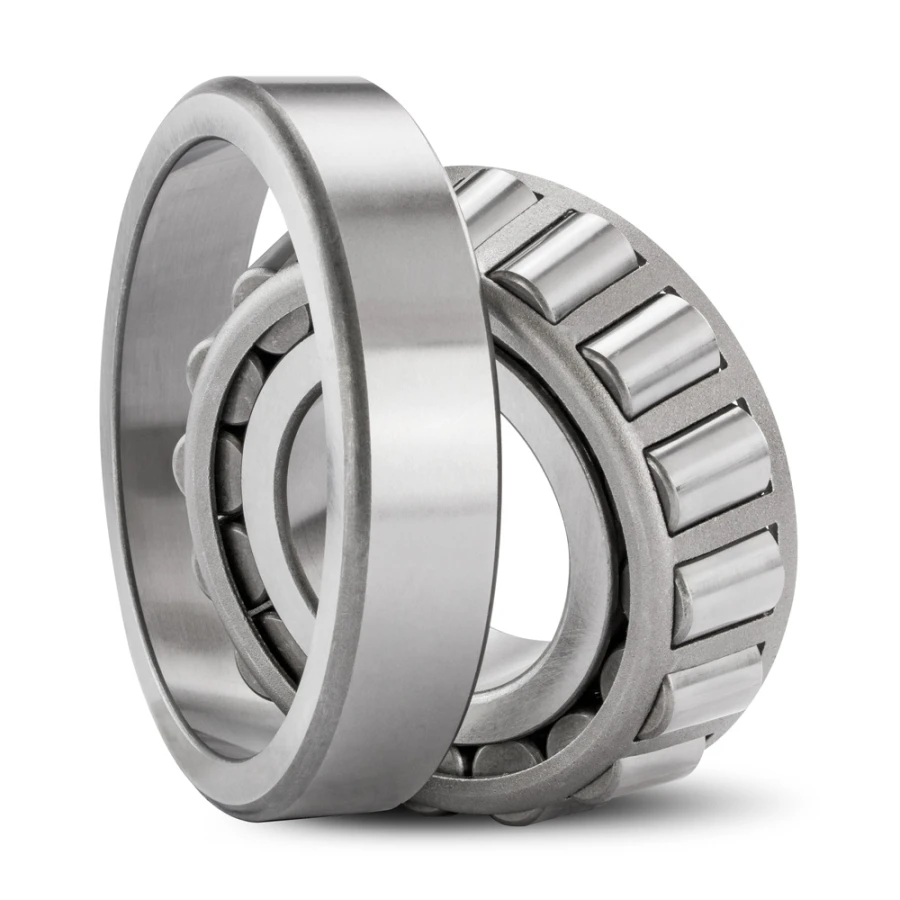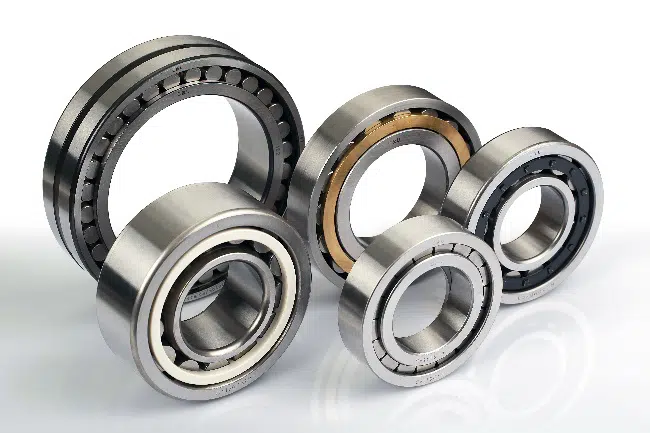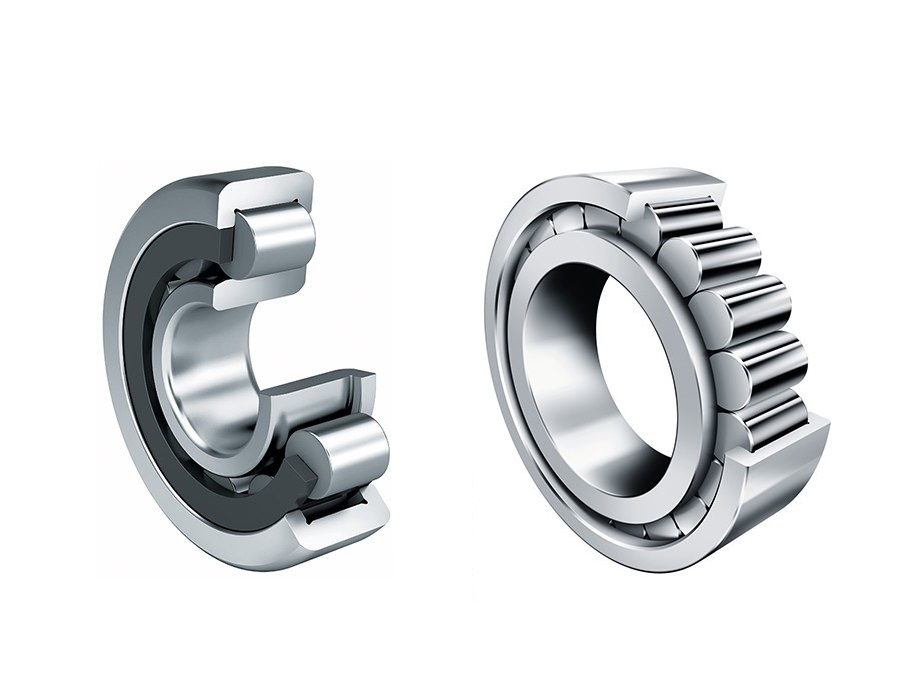What are the Steps for Proper Installation and Alignment of Tapered Roller Bearings?
Proper installation and alignment of tapered roller bearings are essential to ensure optimal performance, reliability, and longevity. Incorrect installation can lead to premature wear, reduced efficiency, and even catastrophic failure. Here are the steps to follow for the correct installation and alignment of tapered roller bearings:
- 1. Clean and Prepare the Components:
Thoroughly clean the bearing components, including the bearing housing, shaft, and associated parts. Remove any dirt, debris, or old lubricant that could impact the bearing’s operation.
- 2. Choose the Correct Tools:
Use appropriate tools and equipment for the installation, such as bearing heaters for controlled heating and proper fit. Avoid using excessive force or striking the bearing directly, as this can damage the components.
- 3. Inspect the Bearings:
Before installation, visually inspect the tapered roller bearings for any signs of damage or defects. Ensure that the rollers and raceways are clean and free from contaminants.
- 4. Apply Lubrication:
Apply the recommended lubricant to the rollers, raceways, and other bearing components. Proper lubrication is crucial for reducing friction, dissipating heat, and preventing premature wear.
- 5. Mount the Bearings:
Mount the bearings onto the shaft or into the housing using appropriate methods. Avoid applying excessive force directly to the bearing components, as this can lead to damage. Utilize specialized tools like bearing pullers and press tools if necessary.
- 6. Ensure Proper Alignment:
Proper alignment is critical to prevent excessive loads, misalignment, and premature wear. Use precision measurement tools to ensure the bearing is aligned with the shaft and housing within specified tolerances.
- 7. Apply Controlled Heat:
If necessary, apply controlled heat to the bearing components to aid in expansion and facilitate proper fit. Ensure that the heat is applied uniformly to avoid distortion or damage.
- 8. Use Adequate Preload:
If specified for your application, apply the appropriate axial preload to eliminate internal clearance and optimize load distribution among the rollers.
- 9. Secure Bearings:
Secure the bearings in place using locking mechanisms, such as locknuts, to prevent unintended movement and ensure proper retention.
- 10. Verify Fit and Function:
After installation, verify that the bearings are properly seated, aligned, and functioning as intended. Rotate the shaft to ensure smooth operation and absence of unusual noise or vibration.
- 11. Document the Installation:
Keep a record of the installation process, including alignment measurements, preload values, and any relevant notes. This documentation can aid in future maintenance and troubleshooting.
Proper installation and alignment are essential to achieving optimal performance and longevity from tapered roller bearings. Following these steps ensures that the bearings operate smoothly and reliably within their intended applications.
Are there different cage materials commonly used in cylindrical roller bearings?
Yes, there are different cage materials commonly used in cylindrical roller bearings. The cage, also known as a retainer or separator, is a critical component that holds the cylindrical rollers in position and maintains their proper spacing. The choice of cage material depends on various factors such as application requirements, operating conditions, and the desired balance between strength, durability, and cost. Let’s explore some of the commonly used cage materials in cylindrical roller bearings:
- Steel:
Steel cages are widely used in cylindrical roller bearings due to their excellent strength, durability, and wear resistance. Steel cages can withstand high operating temperatures and are suitable for applications with heavy loads and high-speed operation. The steel cages are typically made from low carbon steel, and in some cases, high-strength brass-coated steel or other alloyed steels are used for enhanced performance in demanding environments.
- Brass:
Brass cages offer good strength, high corrosion resistance, and excellent heat dissipation properties. They are commonly used in cylindrical roller bearings for applications that require resistance to harsh operating conditions, such as high temperatures or corrosive environments. Brass cages are particularly suitable for slow to moderate speed applications where their excellent thermal conductivity can help dissipate heat effectively.
- Polyamide (Nylon):
Polyamide cages, often referred to as nylon cages, are lightweight, corrosion-resistant, and have good wear properties. They offer low friction and allow for smooth rolling motion of the cylindrical rollers. Polyamide cages are commonly used in applications where reducing weight and inertia are important considerations, such as automotive and aerospace industries. They are also suitable for applications with moderate speeds and operating temperatures.
- Phenolic Resin:
Phenolic resin cages are known for their high strength, low friction, and excellent dimensional stability. These cages provide good resistance to wear, chemicals, and heat. Phenolic resin cages are commonly used in high-speed cylindrical roller bearings where low cage weight and inertia are crucial for reducing friction and maintaining stable operation at high rotational speeds.
- Other Materials:
In addition to the above-mentioned materials, other cage materials such as aluminum alloys, stainless steel, and engineered plastics may be used in specific applications. Aluminum alloy cages offer lightweight properties and good corrosion resistance, making them suitable for certain industries. Stainless steel cages provide high corrosion resistance and are used when the bearing operates in aggressive environments. Engineered plastics, such as PEEK (polyether ether ketone) or PTFE (polytetrafluoroethylene), are used for their self-lubricating properties, chemical resistance, and low friction characteristics.
The choice of cage material depends on factors such as load, speed, temperature, lubrication, and environmental conditions. Bearing manufacturers carefully select the appropriate cage material to ensure optimal performance, longevity, and reliability of the cylindrical roller bearing in a specific application.
How do cylindrical roller bearings contribute to reduced friction and heat generation?
Cylindrical roller bearings play a crucial role in reducing friction and minimizing heat generation in various applications. Let’s explore how these bearings contribute to these important factors:
- Rolling Motion:
Cylindrical roller bearings facilitate rolling motion between the inner and outer rings, as well as the cylindrical rollers. This rolling motion significantly reduces friction compared to sliding or rubbing contact. Instead of sliding against each other, the rolling elements roll smoothly over the raceways, resulting in lower frictional forces. The reduced friction helps to minimize energy loss and heat generation within the bearing.
- Precision Manufacturing:
Cylindrical roller bearings are precision-engineered components manufactured to tight tolerances. The surfaces of the rollers and raceways are carefully finished to ensure smooth and precise contact. The high precision in the bearing’s construction minimizes irregularities and imperfections that could cause increased friction and heat generation. By maintaining close tolerances, cylindrical roller bearings optimize performance and reduce frictional losses.
- Lubrication:
Proper lubrication is essential for reducing friction and heat in cylindrical roller bearings. Lubricants create a thin film between the rolling elements and raceways, separating them and minimizing direct metal-to-metal contact. This lubricant film acts as a protective barrier, reducing friction and dissipating heat generated during operation. Adequate lubrication also helps to prevent wear, corrosion, and premature failure of the bearing.
- Cage Design:
Cylindrical roller bearings often incorporate a cage or separator that spaces and guides the rollers. The cage retains the individual rollers in their proper positions, preventing them from contacting and rubbing against each other. This design feature not only maintains the integrity of the rolling elements but also reduces friction and heat generation by minimizing contact between adjacent rollers. The cage also helps to maintain proper lubricant distribution throughout the bearing.
- Efficient Load Distribution:
Cylindrical roller bearings have a line contact between the rollers and raceways, which enables efficient load distribution. The cylindrical shape of the rollers allows them to bear loads along their length, spreading the load over a larger surface area compared to other bearing types. This even distribution of the load reduces localized stresses and friction at specific contact points, resulting in reduced heat generation.
- Heat Dissipation:
Cylindrical roller bearings are typically designed with features that facilitate heat dissipation. They may incorporate special heat-treated components, such as rings and rollers, that have enhanced heat resistance properties. Additionally, the bearing design may include features such as grooves, holes, or special surface coatings to improve heat dissipation and prevent the buildup of excessive temperatures within the bearing assembly.
By minimizing friction and heat generation, cylindrical roller bearings contribute to improved efficiency, reduced energy consumption, and extended bearing life. These factors are crucial in various applications where the performance, reliability, and longevity of rotating machinery are critical considerations.
editor by CX 2024-04-23




